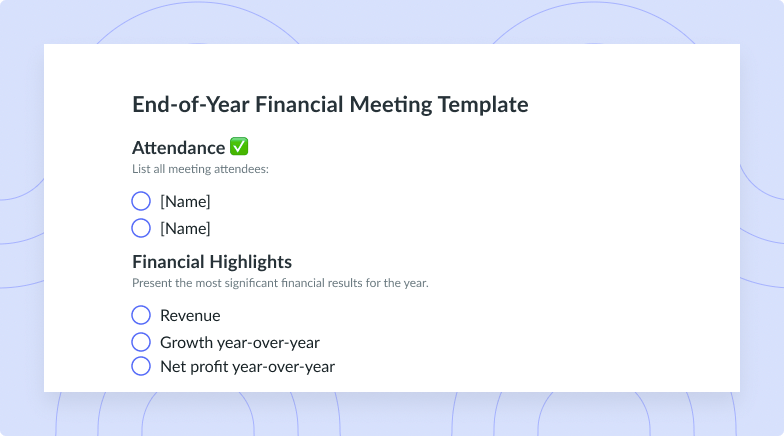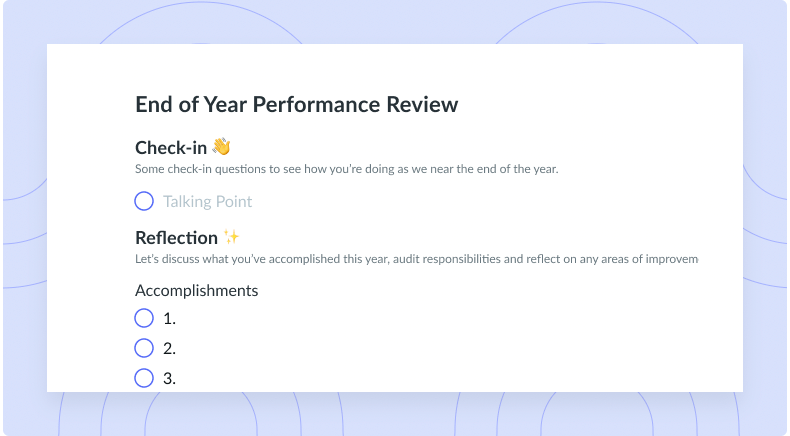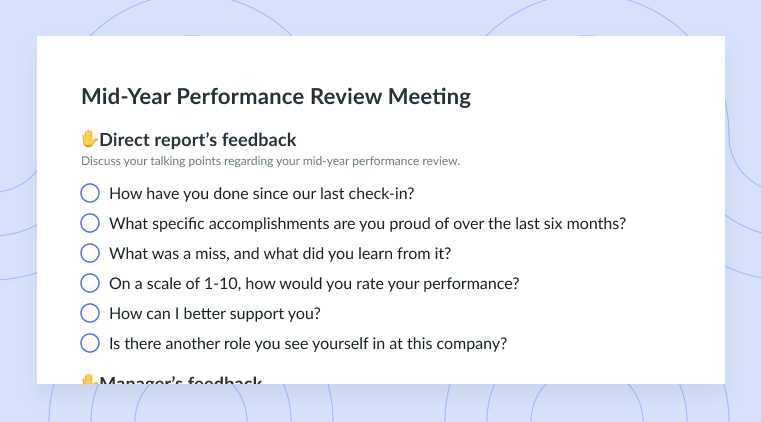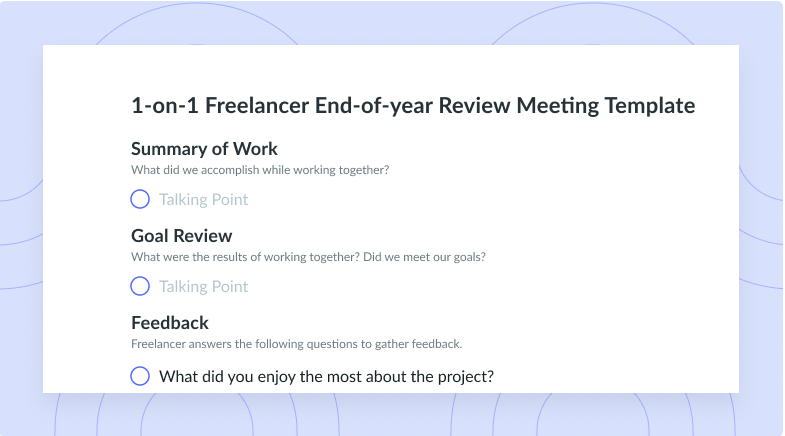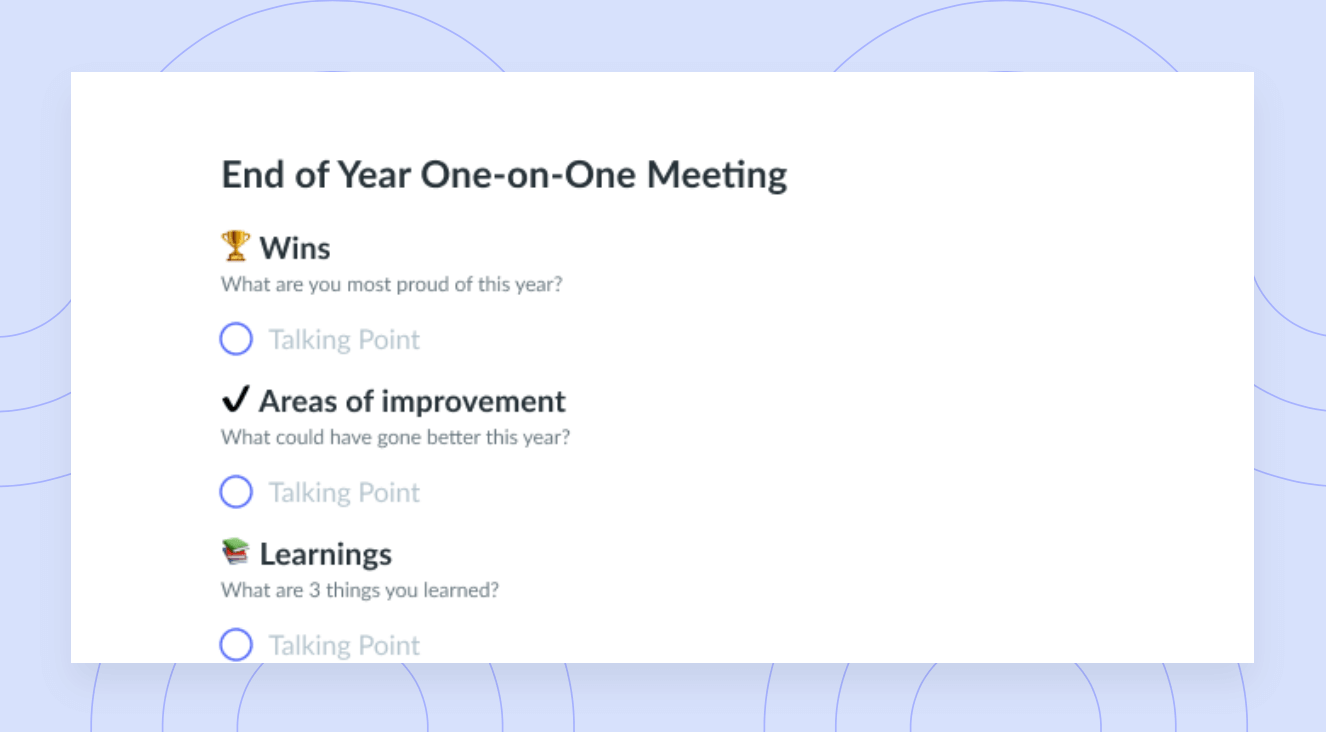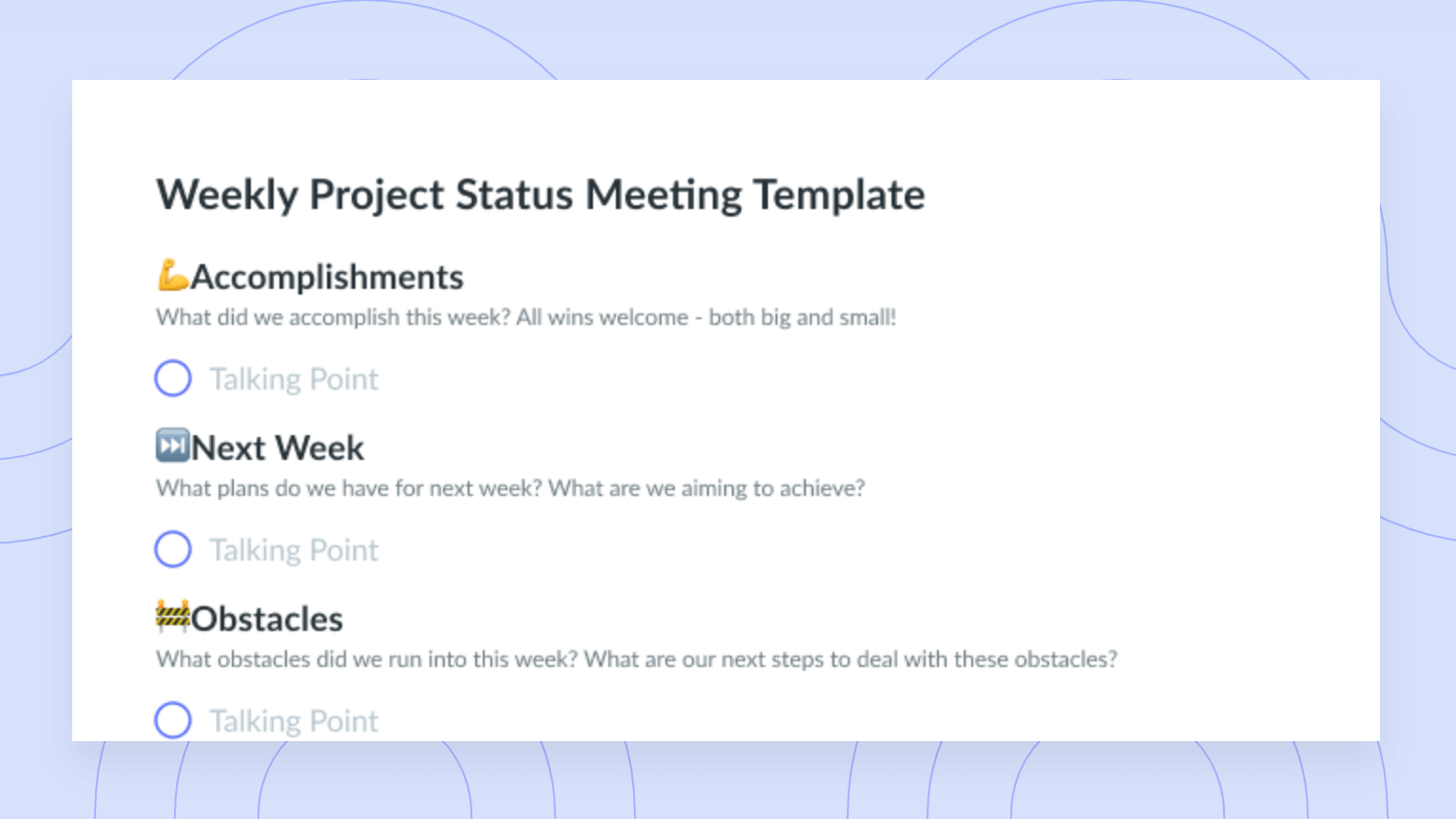How to Have the Best Year-End Review (Managers and Employees)
See what a year-end review is all about and how implementing one can benefit your team’s performance!
Most organizations conduct an assessment of their employees productivity and behavior at least once or twice a year. There are different types of performance evaluations, including a self-evaluation, a 360 feedback review, and a year-end review. In this article, we’re covering everything about year-end reviews and how to implement one to see the highest boost in performance for your team!
- What is a year-end review?
- Topics to cover in a year-end review
- 8 tips to conduct a year-end review
- How to run an effective year-end review with Fellow
What is a year-end review?
A year-end review is a type of performance evaluation that happens at the end of a calendar or fiscal year. Some companies have fiscal year ends in different months, such as May or September. Ultimately, you can opt to conduct your reviews based on the fiscal year end or the calendar year end. In this performance evaluation, you’ll be reviewing each employee’s goals, achievements, and challenges over the past 12 months. This will include time to provide feedback for how the employee can improve and achieve a new set of goals and priorities in the upcoming year.

Set the stage for a productive year ahead
Streamline your review process, ensure clear communication, and empower your managers to deliver constructive, impactful feedback with Fellow!

Topics to cover in a year-end review
- Scope of work
- Strengths and weaknesses
- Accomplishments
- Priorities and objectives
- Areas for improvement
Scope of work
Scope creep is a lot more common than we think, and it occurs when an employee’s workload slowly grows over time. If the employee’s title or compensation isn’t lining up with the new responsibilities, they may feel stressed, burn out, or decide to leave the company. Talk with teh employee about what projects they’re currently working on and decide which ones are suitable for their role.
Strengths and weaknesses
Every employee has strengths and weaknesses that change over time as they settle into their role. Talk about how these strengths and weaknesses have changed over the past year and what challenges or resources are attributed to that change. For example, if an employee has jumped into some new projects, you’ll also want to consider any new skills they’ve learned on these projects as new strengths. Alternatively, they may have noticed new areas of weakness that didn’t allow them to achieve the results they wanted on new projects.
Accomplishments
Celebrating wins is super important to keep employees motivated! Talk through any achievements that stood out to you over the past year. Make sure you allow an opportunity for your employee to share their own list of accomplishments as they may have some personal growth areas of which you weren’t previously aware. Try to quantify accomplishments as much as possible to showcase the level of impact.
Priorities and objectives
Review the objectives that were set at the start of the last year and compare them against the employee’s accomplishments. Ideally, if your employee was acting in alignment with the team’s objectives and key results (OKRs), you’ll see that high-priority goals had been favored. Then, take time to set new objectives for the upcoming year. Be clear about which two or three items are the highest priorities to achieve.
Areas for improvement
Provide your employee with constructive feedback so they can improve. However, giving and receiving feedback can be tough, especially if you’re a new manager or if this is your first review—it helps to keep the conversation open and honest. You can also try asking your employee for some feedback about yourself as a manager!
8 tips to conduct a year-end review
- Start with positive feedback
- Clarify the company’s goals and priorities
- Discuss daily responsibilities
- Be specific
- Practice active listening
- Set new challenges
- Find solutions together
- Leave time for questions
1Start with positive feedback
A great way to kick off a meeting is to discuss what has gone well this year. Remind yourself to do this by using a meeting agenda and including it as the first discussion topic!
For employees, Caroline Ceniza-Levine offers this advice:
“Throughout the year, keep a file of emails citing you for a job well-done or customer testimonials or presentations or other output that you produced. This can provide tangible evidence of your claims and a good reminder so you don’t forget anything.”
To help, Fellow’s Feedback feature allows you to collect all of your positive feedback and evidence throughout the year and store it in a central location.
2Clarify the company’s goals and priorities
Keep your team’s common objectives stored in a shared space—like in the Objectives tab in Fellow! You can use this information at year-end review meetings to reflect on progress made towards those goals, but you can also use it throughout the year at quarterly check-in calls or while deciding between project priorities as well. When it comes time for the end-of-year evaluation, all you need to do is open the shared goal-tracking documents and compare the team’s objectives to the achievements made by each employee.
3Discuss daily responsibilities
Spend some time talking through the day-to-day work in which your employee is engaged. It might surprise you to learn everything that’s on their plate! Caroline Ceniza-Levine notes that,
“With restructuring and roles getting combined, you might have taken on much more than your manager remembers. Your annual review is the perfect time to confirm with your manager how much responsibility you have.”
4Be specific
Getting specific is super helpful when delivering feedback or talking about a year-long performance appraisal. As often as possible, try to rely on quantitative data or examples backed by dates or projects that the employee was working on. For example, it would be more helpful to say something specific like, “Your confidence when managing [challenge] in [project] demonstrated great team leadership skills,” than to say, “Your leadership skills have been improving.”
5Practice active listening
Active listening is an important skill to practice for year-end review meetings. It means showing the other person that you’re paying attention through cues such as nodding along or asking follow-up questions. You can also take notes during the conversation and offer a summary of what you heard to ensure that you’ve understood the other person correctly. This goes a long way to show respect and sincerity in any one-on-one meeting!
6Set new challenges
Focusing on the year ahead, define new goals to complete. Try to find balance with challenges that require some level of growth to meet, such as completing training or developing a new skill, but that are still realistic considering the starting point. There are many types of challenges to consider, such as personal growth goals (for example, improving work-life balance), career development milestones (for example, earning a promotion), and skill-specific improvement goals (for example, learning advanced coding practices).
7Find solutions together
It’s a best practice to identify potential blockers that you’ll face in the next year. Managers and direct reports will both likely have unique challenges that require their own solutions. For example, managers might be faced with rapid hiring that won’t allow them as much time to support existing employees, so the employee will need to find other ways to get access to support resources if needed. Or the employee might require additional training to make them eligible for a new promotion they want to achieve, so the manager could help by securing a budget for the employee to attend the course.
8Leave time for questions
Leave the last 5-10 minutes of the conversation for answering any questions. Of course, questions can be asked and answered at any time during the year-end review, but it’s helpful to designate some time at the end for any questions that didn’t line up with a specific topic during the earlier discussion. Once any questions are addressed, make sure to end the call with a positive tone and encouraging words to kickstart the new year with the right energy!
How to run an effective year-end review with Fellow
For teams that manage meetings, Fellow is the best tool to keep everyone organized, accountable, and on track! Kickstart your year-end review conversations by sending out a meeting agenda to managers and employees, which allows both parties to input their talking points such as accomplishments, goals, and ideas for new challenges. If you’re not sure how to structure the meeting agenda, you can rely on Fellow’s AI generator tool to create one for you!
During the call, you can open the agenda right in Google Chrome using Fellow’s browser extension, which keeps you distraction-free for the conversation. Fellow also lets you use automated follow-up reminders to add action items to your to-do lists after your meeting and helps you create a summary of the call (using AI!) to keep your reviews documented.

Parting advice
Don’t be shy when it comes to year-end reviews. This is one of the few times where feedback is openly asked for and encouraged (even though we’re firm believers that feedback should be continuously looped into your work processes). Make the most out of your designated time with each employee to see what really motivates them and how you can help them achieve higher growth goals in the next year. You’ll be amazed what your team is interested to do!









